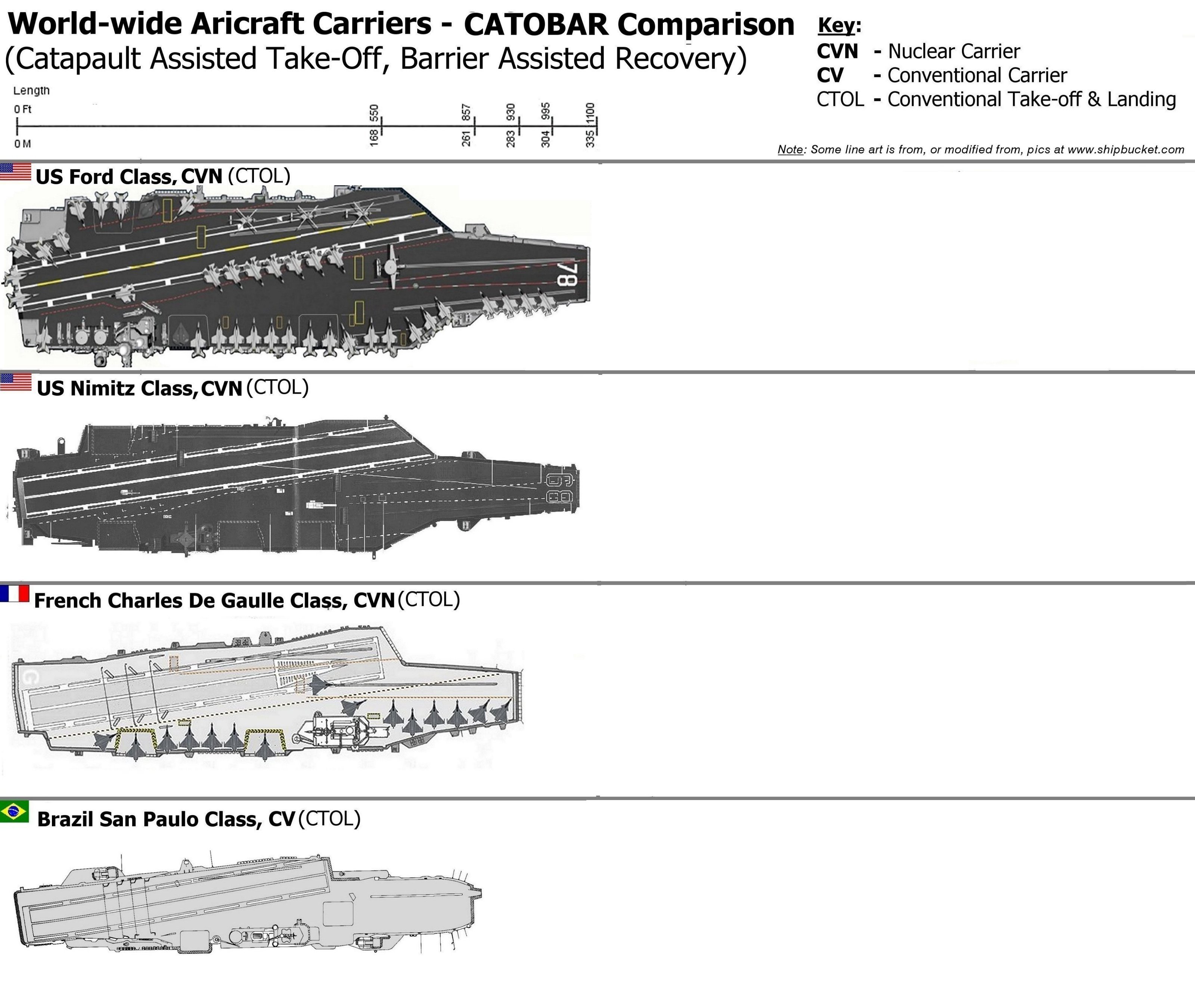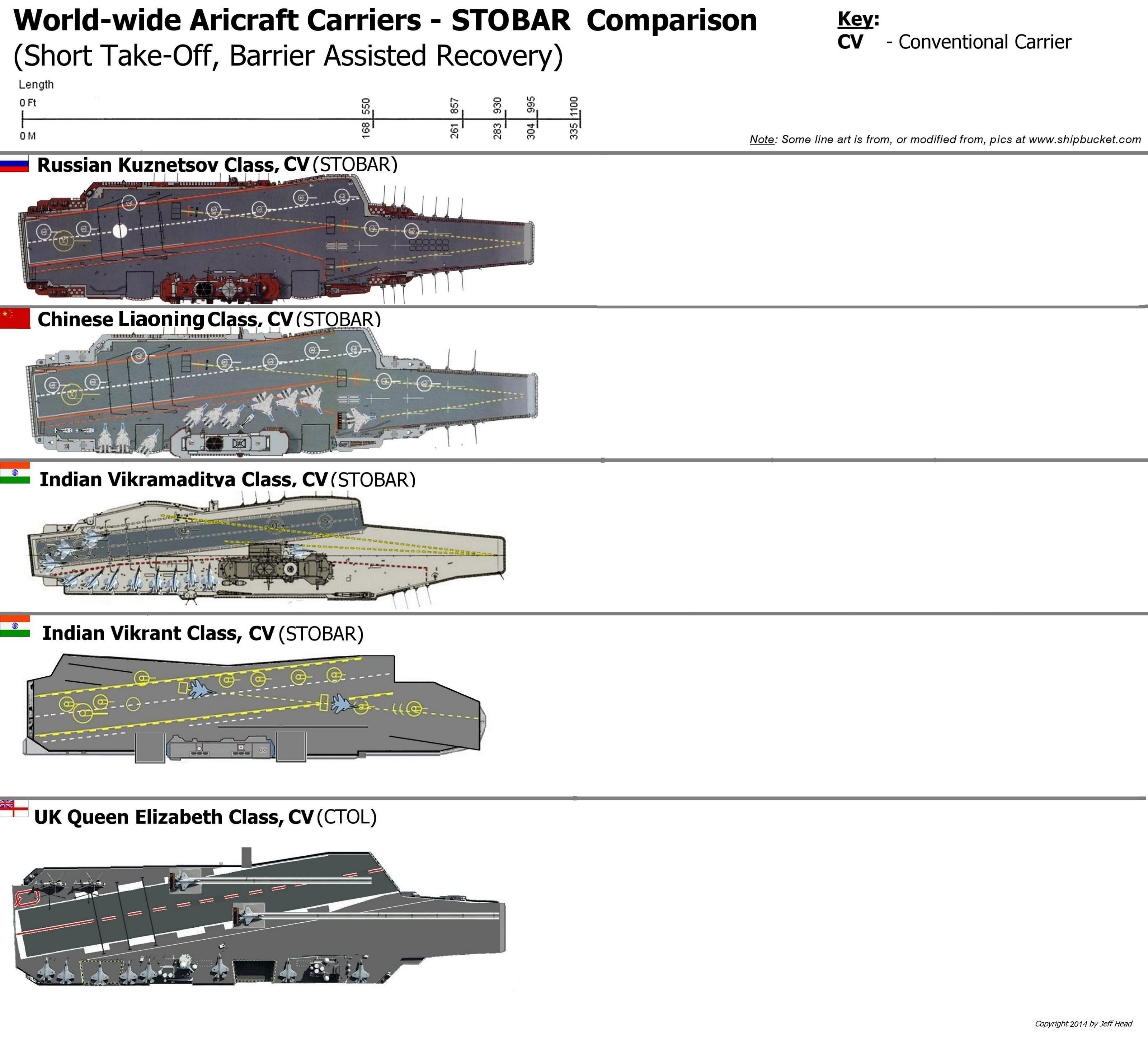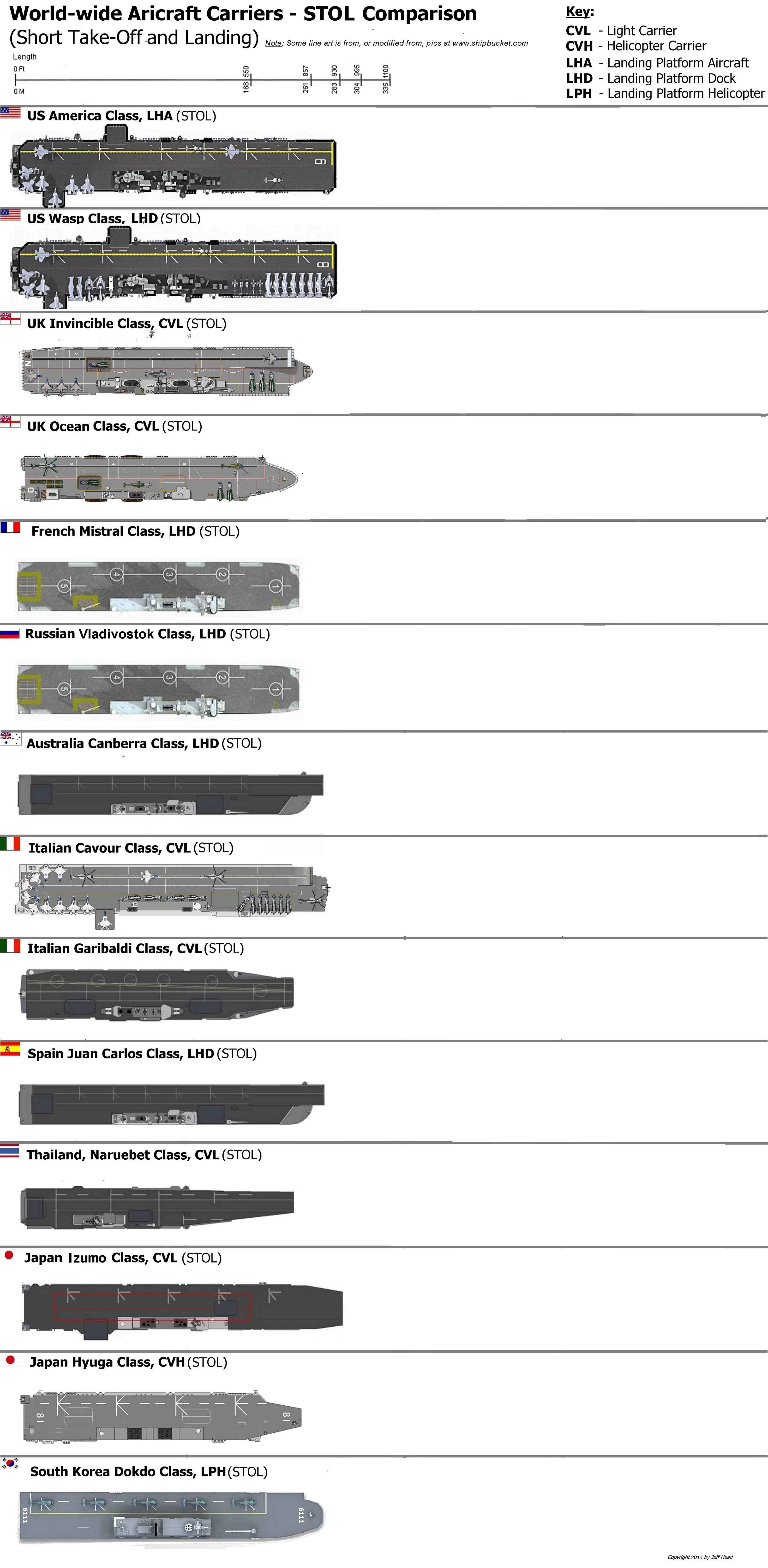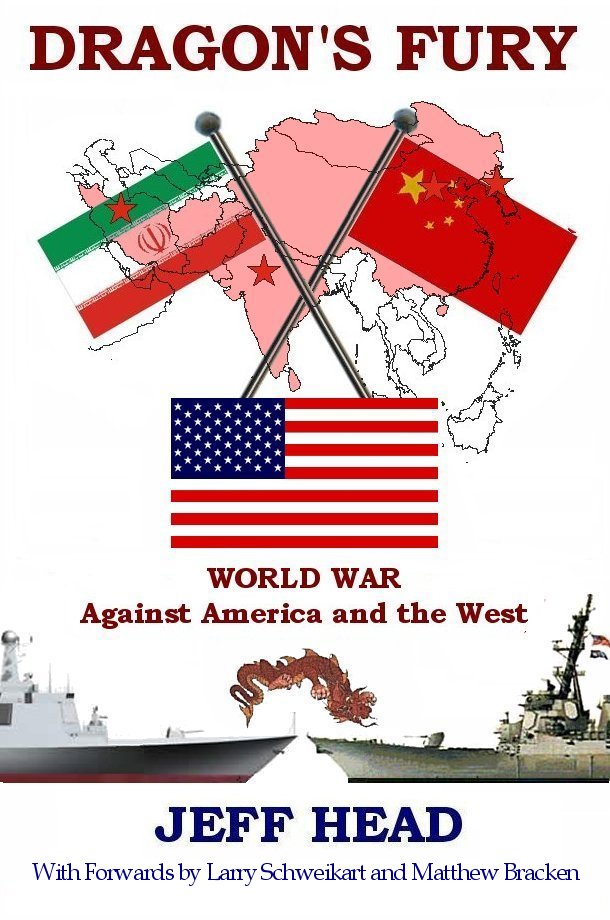
|
| CATOBAR - This stands for Catapault Assisted Take-Off, Barrier Assisted Recovery. Using "trap lines" to stop an aircaft while landing, and a catapault to help it launch, means that much heavier, larger aircraft loaded with more weapons can operate off of the carrier. These are the iconic, most easily recognized and considered aircraft carriers, with the most flexability and capability. When one thinks of carriers they invision these types of vessels...and they generally envision the United States and their nuclear powered, super-carriers. These type of carrier are also the most expensive. In the US case, the new,Gerald Ford Class super carrier can costs 7 billion dollars or more to build, and hundreds of millions per year to operate. These types of carriers not only can carry aircraft with more fuel and weapons...they also can operate large AEW aircraft. All of these increase the capability of the carrier and its ability to project power and defend itself. Within this type of aircraft carriercategory you also find both nuclear powered and convetnional powered carriers. There are only three nations who either have, or are currently building thirteen such aircraft carriers. The United States (11), France (1), and Brazil (1). |  (Click pic for a high res version) |
| STOBAR - This stands for Short Take-Off, Barrier Assisted Recovery. All of these carriers have a "ski-jump" ramp to assist in the take off of conventional fixed-wing aircraft, and use "trap wies" to help aircraft land. This requires aircraft with a high thrust to weight ratio for take=off. Although the ski-lift does not allow for as heavy an aircraft to launch, or as big a one, it is more effective than a vertical, or purely short take-off configuration, and much less expensive and easier to operate than a CATOBAR configuration. Still, the limitation on weight is a major one, reducing the weight, weaponry and size of the aircraft. For exampe, until a VSTOL AEW version of an aircraft like the V-22 Osprey comes out, these vessels are limited to helicopters providing their AEW role, and they have a far reduced capability over a fixed wing AEW aircraft, thereby reducing the ability of the carrier to most effectively defend itself. All of the vessels in this category are conventionally powered...meanining non-nuclear. Four countries are currently operating or building four of these type of carriers. Great Britain (2), Russia (1), China (1), and India (2). (Though the two Queen Elizabeth aircraft carriers for Great Britian will not have a true arrestor system and could also be classified as STOL carriers. But with the ski-jump, and the special rolling landing procedure they will implemnt with their F-35Bs, we are classifying them as STOBAR.) |  (Click pic for a high res version) |
| STOL - This stands for Short Take-off and Landing. Within this category you have both Ski-Jump assisted take-off and purely flat-deck carriers, but no "trap wires" or barrier assisted landing. Aircraft on these carrier either take off vertically, or use an appreciable portion of the deck for a pure short take-off, building up speed as they roll down the deck and then using their high thrust to weight ratio, or rotatable jet exhaust nozzels to get them in the air in this amount of space. So, aircraft with a high thrust to weight ratio or the capability of pure vetical take-off (VTOL) operate off of these carriers. Again, they are limited in weight, fuel and ordinance, and the AEW restrictions that apply to the STOBAR category also apply here. Nonetheless, these carriers are cheaper to build, are very flexable (because many of them are multi-role vessels that also employ a well deck, or dock so they can embark Marines and their equipment) and there are quite a few of them. They are all conventionally powered. Eleven different countries currently either operate or are building thirty of these carriers. The United States (10), France (3), Russia (2), the United Kingdom (2), India (1), Australia (2), Japan (4), Italy (2), Spain (2), Korea (1), and Thailand(1) |  (Click pic for a high res version) |
|
SUMMARY - Summing it up then, there are 13 different nations operating a total of 48 aircraft carriers in the world today. These carriers are divided into the three categories mentioned, but also represent 20 different classes of vessels from the various nations. The numbers are growing. Twenty years ago the number of countries who operated such vessels was 7 with 38 vessels. Ten years ago it was 9 countries with 42 vessels, as stated, today it is 13 countries with 48 vessels. The trend is for the numbers to continue to grow. This is because of the versatility and power projection capabilities these vessels provide a nation's leaders through its navy...the ability to protect its assests and interests far from home and without the need for an airfield from a friendly country, or one that is either captured or built being necessary to get that nation's aircraft to the area where they are needed.
Here's a table for how it breaks down:
| NATION | CATOBAR | STOBAR | STOL | CLASS | TOTAL | US | 11 | 0 | 10 | 4 Ford, Nimitz, America, Wasp | 21 | FR | 1 | 0 | 3 | 2 Charles de Gaulle, Mistral | 4 | UK | 0 | 2 | 2 | 3 Queen Elizabeth, Invincible, Ocean | 4 | BR | 1 | 0 | 1 | 1 Sao Paulo | 1 | IN | 0 | 2 | 1 | 3 Vikrant, Vikramaditya, Viraat | 3 | RU | 0 | 1 | 2 | 2 Kuznetsov, Vladivostok | 3 | CH | 0 | 1 | 0 | 1 Liaoning | 1 | IT | 0 | 0 | 2 | 2 Cavour, Garibaldi | 2 | SP | 0 | 0 | 1 | 1 Juan Carlos | 1 | AU | 0 | 0 | 2 | 1 Canberra | 2 | TH | 0 | 0 | 1 | 1 Naruebet | 1 | JP | 0 | 0 | 4 | 2 Hyuga, Izumo | 2 | SK | 0 | 0 | 1 | 1 Dokdo | 1 | Totals | 13 | 6 | 30 | 24 | 49 |
 |
View Guestbook | [COMPARE ALL · LINKS OF INTEREST · COMPARE CARRIERS] | Sign Guestbook |
 |
Copyright © 2003-2014 by Jeff Head |
JEFFHEAD.COM Hit Counter
World-wide Aircraft Carrier Hit Counter



